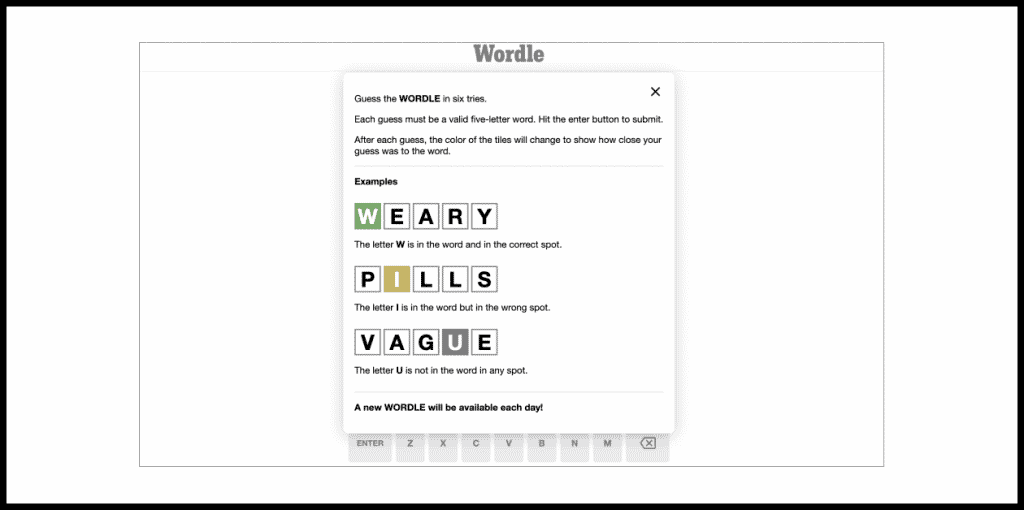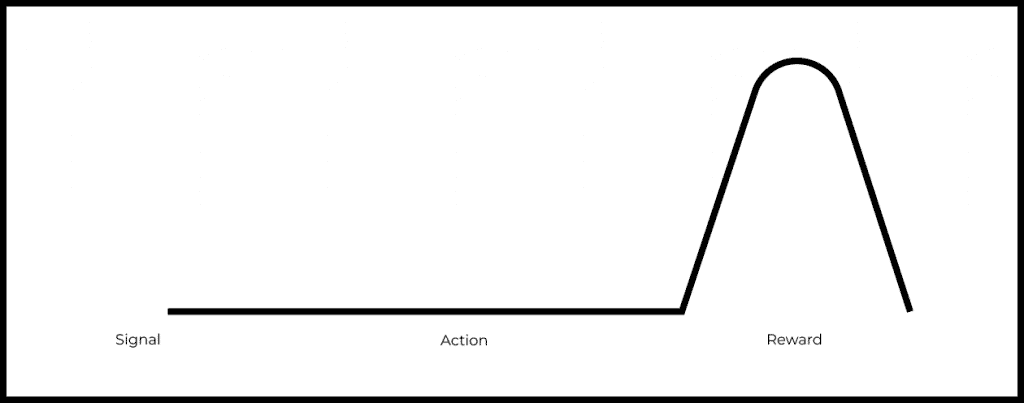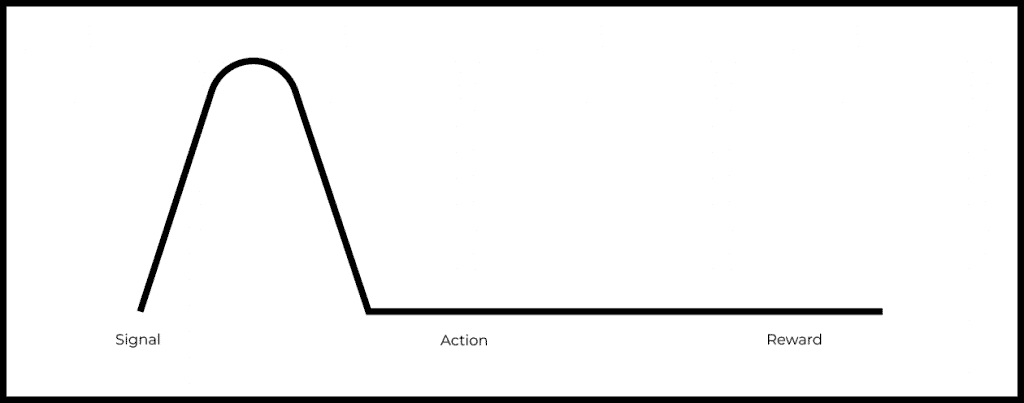Creating a habit among users can be an important component of a product’s long-term success. Let’s start discussing this topic with the mechanisms of habit formation and see how popular products encourage users to keep coming back to them.
Habit, addiction, loyalty – what’s the difference?
Habit, dependence, loyalty – these concepts in the context of product use can be close in meaning: they can all encourage users to return to a product more often and choose it over other alternatives. To make reading this material more comfortable, let’s agree on what we will call a habit and what we will not.
What we will call a habit
Habits are unconscious or almost unconscious human actions that occur frequently and regularly. The inability to perform such an action for some reason causes a feeling of discomfort and inconvenience. Here are some examples of everyday habits:
- Walking the same route;
- Put your keys in a specific pocket;
- Look around before entering a crosswalk
And the axis is a couple of groceries:
- Read the news feed and social media in the morning right after waking up;
- Check in at different locations using social networks or services like Swarm from Foursquare.
Often, such actions are automatic, and the inability to perform them can be quite uncomfortable. The automatism of such actions is necessary to free up the brain’s conditional “working memory” and direct it to comprehend other things. Sometimes it is difficult to draw a clear line between habit and addiction, especially in the context of digital products, such as social media or video games. The key difference, in our opinion, is that in the presence of an addiction, all of a person’s actions are aimed at accessing something on which they are actually dependent. This clearly affects all other areas of his or her life. We will not discuss where to draw (and whether to draw) this line in this article. This is a question at the intersection of biology and ethics, i.e. far beyond our competence.
What we will not call a habit
Let’s better draw a line between the habit of using a product and the loyalty of a product user.
Whereas a habit, as we have already discussed, is an unconscious or poorly understood action that is frequent or regular, loyalty is often formed on the basis of a fairly rational choice and does not always entail high frequency.
A few examples:
- Buy appliances of only one brand;
- Go to the same cafe;
- Fly with the same airline.
Loyalty can be formed under the influence of the following factors:
- The user believes that the product solves the problem better than the alternatives – for example, Uber can be cheaper and faster than a city taxi;
- High cost of switching – for example, all Apple devices immerse the user in one ecosystem, which makes it much more difficult to switch to products from other vendors;
- Top-of-Mind and other factors of brand attractiveness.
What is dopamine and what is its role in habit formation
The formation of behavioral patterns associated with positive experiences is driven by the production of dopamine, a hormone and neurotransmitter. Simply put, it is the basis of any habit that brings pleasure.
→ In our discussion of dopamine, we will simplify considerably by using the basic concepts of well-established concepts. We will leave out a number of details that are fully understood only by qualified neuroscientists.
Among other things, dopamine is responsible for consolidating human experience and stimulating the search for new things. It played a significant role in the evolution of humans as a species. For example, researchers Daniel Z. Lieberman and Michael E. Long in their book The Molecule of More.
Evolutionarily, dopamine works to increase the chances of survival. Through the release of dopamine, the brain reinforces those patterns of behavior that it believes will have a positive effect on the body’s condition.
It is important to understand that dopamine itself is not a pleasure hormone. It creates associations with an action that brings pleasure, which motivates you to do it again.
The role of dopamine in habit formation
How exactly does dopamine work in the context of habit formation?
A simple example. A friend shows you a new popular game, say, Wordle. In this game, you have to guess a five-letter word in six attempts: the player enters random words, and the letters in the word are highlighted.

You’ve never heard of it, but you decide to give it a try. After guessing the word (say, on the last try), you feel satisfied – at this moment, a certain cocktail of hormones, including dopamine, is released in your brain.
This process can be divided into Signal, Work, and Reward stages – a scheme used, for example, by American researcher Robert Sapolsky, whose research will be discussed below. In the case of Wordle, these can be stages:
- An offer to play (Signal);
- Launching the program and the process of passing the level (Work);
- The joy of winning (Reward).
It is at the moment of winning that you get satisfaction and a cocktail of hormones, including dopamine, shoots into your brain.

The next day you decided to play again, and this time you guessed the word almost immediately. This time, the Signal could have been different: you saw someone else’s results in a social media feed or simply remembered your experience yesterday. You again get a cocktail of hormones and feel a sense of satisfaction (especially if the result is better than your friend’s).

The brain remembers that you like this action, and the task of dopamine is to consolidate its repetition, to make you want to do it again and again.
This is achieved by the fact that the dopamine surge begins to occur not at the moment of receiving the reward, but at the moment of Signal appearance. This means that a habit has been formed: the appearance of a trigger leads to the desire to perform an action.

This is how you start playing every day, and it becomes a daily habit. This is how the reinforcement process works – it is critical for habit formation.
The options for a “signal” are varied: it can be internal (for example, boredom) or external (for example, a message from a friend or a push notification). We will talk about them in more detail in the next article.
What else is remarkable about dopamine
There are several other features related to dopamine functioning that are worth noting.
The neurotransmitter is released in large quantities when the probability of a reward is difficult to predict. In a well-known experiment described by Robert Sapolsky, the level of dopamine in monkeys doubled if the probability of a reward for performing an action was reduced from 100% to 50%.

Another interesting feature of dopamine is related to the craving for information. For example, in a 2020 study, scientists confirmed the hypothesis that the search for new information, even if it is not directly related to receiving a reward, is stimulated by the release of dopamine. The mechanism works in the same way as if the brain expects to receive a reward. In this case, information is the reward.
What techniques are used by products to stimulate the habit
Using the example of Wordle, we have analyzed the basic mechanics of habit formation. The game itself is simple. Although it initially stimulates the release of dopamine, its monotony does not lead to a constant increase in its level. Accordingly, there is a high chance that a person will switch to more attractive alternatives, which, in turn, involve more complex mechanics to maintain interest for a longer period of time.
Let’s take a practical look at how the unpredictability of the reward we discussed above stimulates higher dopamine levels, and thus higher motivation to perform a habitual action.
An example from TikTok (from the perspective of a content creator)
In TikTok, you can’t predict the reward: who will like a video, when, and how many likes. The user receives a notification and a dose of dopamine while waiting for the app to open. The engagement and frequency of interaction with TikTok increases in the period after the post is published. However, if a user has, say, only ten active subscribers and the video is only available to them, they are unlikely to feel the same enthusiasm: the result becomes too predictable.
The creation of a dopamine loop is achieved by stimulating the user to perform an action that can potentially bring them a greater reward, and therefore a higher level of motivation to come back to use the product again:
- Did you get 1000 views?
- What if you take part in this challenge?
- What if you try this track?
An example with games
In casual mobile games, game designers directly borrow some techniques, such as roulette with rewards, from casinos. MMORPGs, for example, use the element of randomness of reward when loot falls from a killed enemy. Following the same logic as with social networks, the unpredictability of the reward encourages players to repeat the actions that promise it and return to the game.
The techniques described above, which work to attract and consolidate the habit, should be repeated.
- Today I received such a unique item, but what will I get tomorrow?
- Will I be able to beat the new boss?
- And what reward will come next?
Users do not always verbalize these questions for themselves, but the search for answers to them, combined with the mechanisms of dopamine, keep them coming back to the product.
Habit is a powerful and dangerous tool
Dopamine plays an important role in the formation of habits. This neurotransmitter helps people remember the behavior that leads to a reward – or what the brain perceives as a reward. The same mechanics can be used to form a user’s habit, including for a product. This makes it possible to “bind” the user to it, to create additional value for them in the area where the action is unconscious or poorly understood.
In the next article, we’ll look at how the Hook framework by Nir Eyal, author of Hooked, is used to build habits in products.